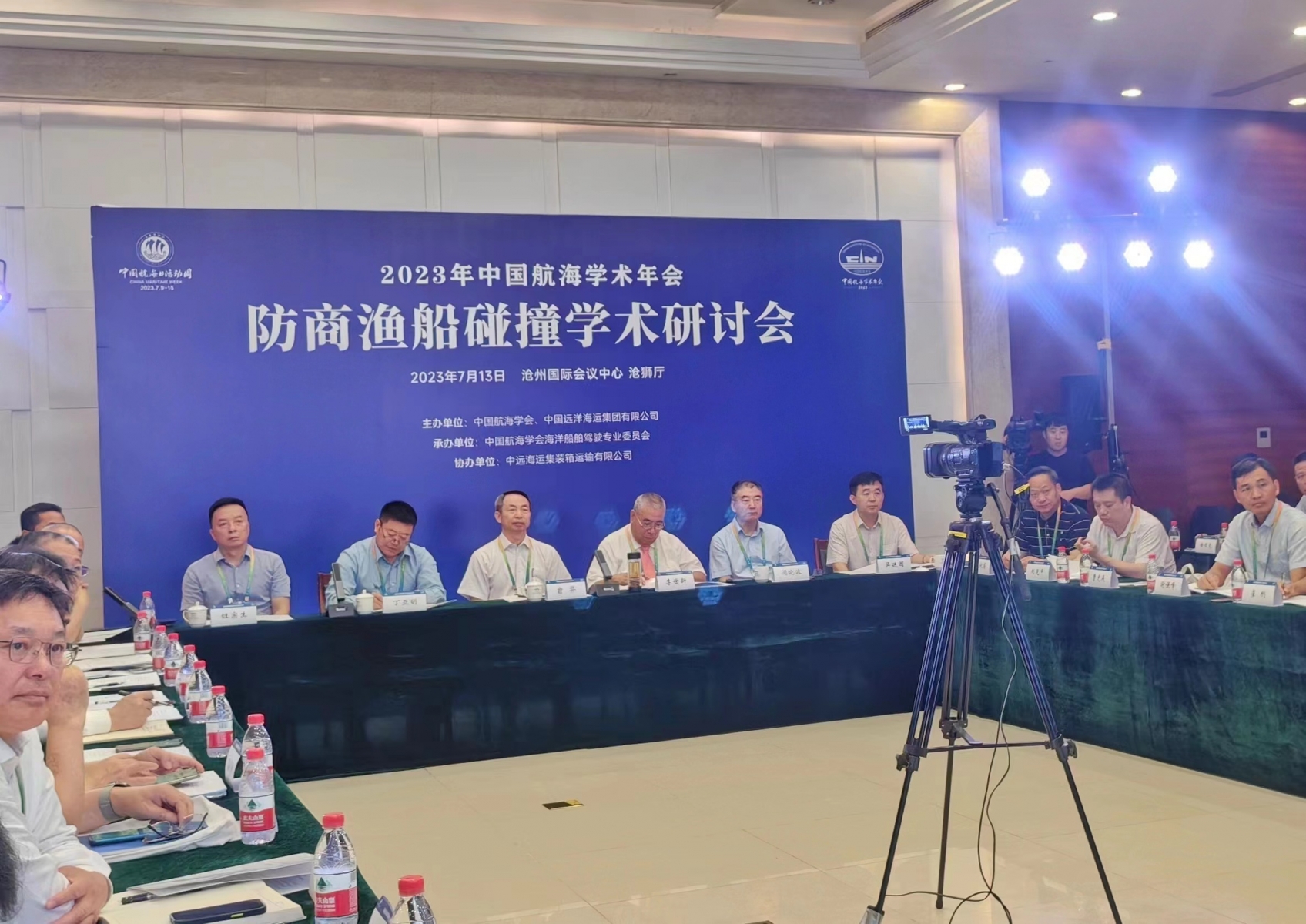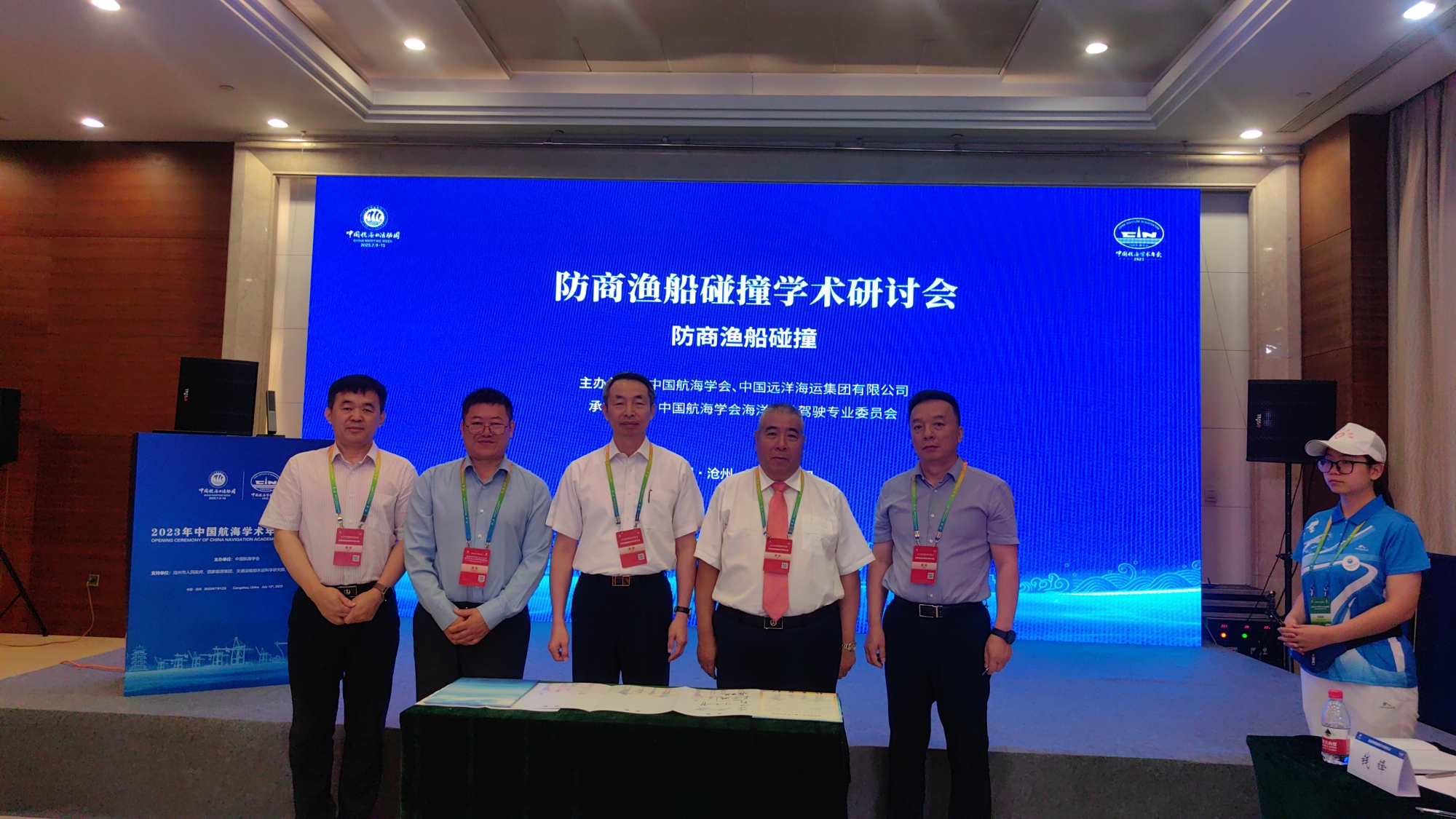During the China Navigation Academic Conference of the main event of the China Maritime Week 2023, the Marine Ship Driving Professional Committee of the Chinese Institute of Navigation (MSDPC) held the "Academic Seminar on Preventing Commercial Fishing Ship Collisions" on July 13 at the Cangzhou International Convention Center in Hebei. The conference was jointly organized by the China Institute of Navigation and COSCO Shipping Group, and co-hosted by MSDPC. The meeting was held in the form of a main venue combined with online participation. The attendees included leaders from the China Institute of Navigation, COSCO Shipping Group, guests from maritime and fishery regulatory departments, members of the MSDPC and related personnel, and frontline ship drivers. About 80 people attended the meeting on-site, and 280 people attended the meeting online. Li Shixin, Vice Chairman of the China Institute of Navigation, attended the meeting and delivered a speech. Relying on the leadership of the unit and Weng Yi, Safety Director of COSCO Shipping Group, attended the meeting and delivered a speech.

During the conference, the MSDPC proposed two industry initiatives on "quantifying the minimum avoidance distance of ships" and played a video titled "Using distance to ensure safety". By clarifying the minimum avoidance distance and strengthening the awareness of the red line for avoidance, it provided a basis for evaluating the avoidance behavior of ship drivers and strengthened the process supervision of ship avoidance behavior. The meeting also played a video introducing the equipment named "Captain's Another Pair of Eyes", explaining the situation of the maritime collision avoidance warning and monitoring equipment developed using information technology.

The conference invited guests from maritime and fishery regulatory departments, experts from shipping companies, and captains of frontline vessels to give keynote speeches on the prevention of commercial fishing vessel collisions. They jointly discussed the problem in China's coastal areas from the perspectives of maritime maneuvering technology for commercial ships and fishing vessels, as well as shore-based supervision for maritime and fishery authorities. They actively interacted and exchanged their experiences and opinions in preventing commercial fishing vessel collisions from multiple aspects.
